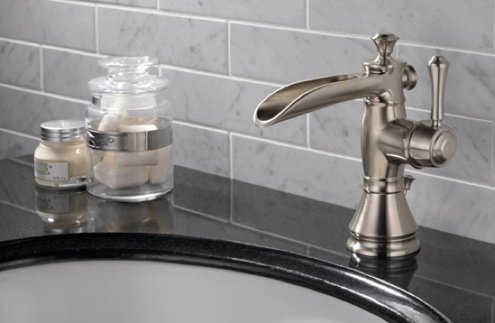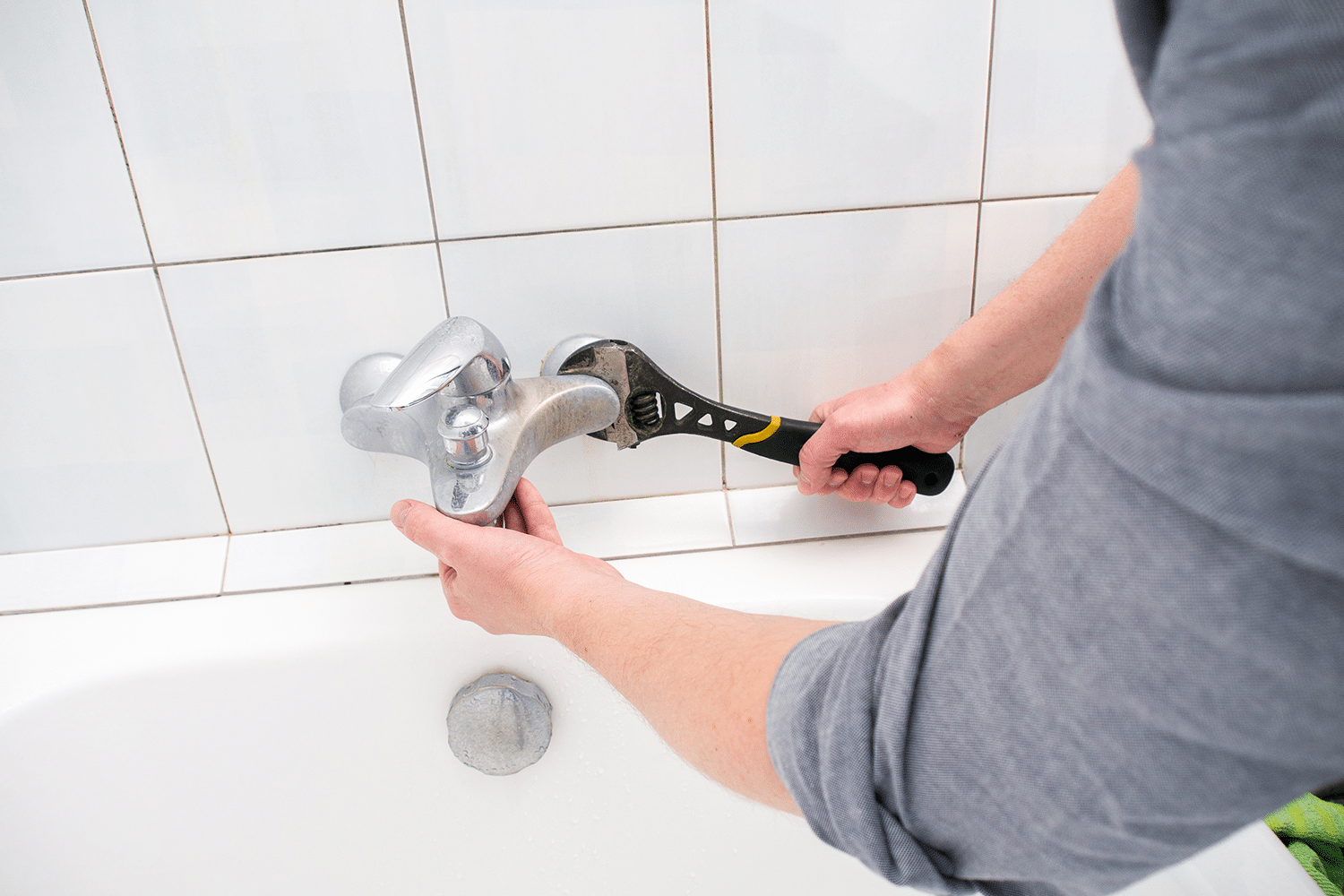They are making a few good observations relating to Water Dripping from Faucet: Why and How to Fix as a whole in the article on the next paragraphs.

Trickling faucets could look like a small inconvenience, yet their influence goes beyond just the nuisance of the noise. From drainage to incurring unneeded financial expenses and health risks, disregarding a trickling tap can lead to numerous repercussions. In this article, we'll explore why it's essential to resolve this common family problem quickly and effectively.
Wastefulness of Water
Ecological Effect
Dripping faucets contribute substantially to water wastefulness. According to the Epa (EPA), a solitary tap trickling at one drip per secondly can throw away more than 3,000 gallons of water annually. This not only strains water sources yet additionally affects communities and wild animals depending on them.
Financial Expenses
Enhanced Water Costs
Past the ecological effect, dripping taps can blow up water bills substantially. The collected wastage in time converts into greater utility expenses, which can have been stayed clear of with prompt fixings.
Potential Residential Property Damage
Furthermore, long term dripping can result in damage to fixtures and surface areas bordering the tap. Water accumulation can trigger discoloration, corrosion, and also structural problems if left unattended, causing additional repair work expenses.
Health and wellness Concerns
Mold and Mold Growth
The continuous existence of wetness from a dripping tap creates a perfect setting for mold and mold development. These fungi not just jeopardize interior air high quality yet additionally posture health and wellness threats, particularly for people with respiratory conditions or allergic reactions.
Waterborne Illness
Stationary water in dripping taps can come to be a breeding place for microorganisms and other microorganisms, boosting the danger of waterborne illness. Impurities such as Legionella germs thrive in stationary water, potentially leading to serious health problems when consumed or inhaled.
Do it yourself vs. Professional Repair
Benefits and drawbacks of Do It Yourself Repair Work
While some might attempt to fix a trickling tap themselves, DIY fixings include their very own collection of difficulties. Without proper expertise and tools, DIY efforts can intensify the concern or lead to insufficient repairs, lengthening the problem.
Benefits of Employing an Expert Plumber
Employing an expert plumber makes sure that the underlying source of the dripping tap is resolved efficiently. Plumbings possess the proficiency and equipment to identify and repair faucet concerns successfully, saving time and minimizing the danger of further damages.
Step-by-Step Guide to Dealing With a Dripping Faucet
Tools Called for
Prior to attempting to fix a trickling faucet, collect the needed devices, including an adjustable wrench, screwdrivers, replacement parts (such as washers or cartridges), and plumber's tape.
Common Tap Issues and Their Solutions
Recognize the type of faucet and the certain issue triggering the drip. Usual issues consist of damaged washers, rusty valve seats, or faulty O-rings. Describe manufacturer instructions or online tutorials for detailed assistance on repair services.
Preventive Measures
Normal Upkeep Tips
To prevent dripping taps, perform regular upkeep such as cleansing aerators, examining for leaks, and replacing damaged components promptly. Furthermore, think about installing water-saving devices or upgrading to more efficient fixtures.
Value of Prompt Repair Works
Addressing leaking taps as soon as they're noticed protects against more water wastefulness and possible damages, ultimately saving both water and cash in the long run.
Influence On Residential Or Commercial Property Worth
Perception of Well-Maintained Property
Preserving a property in good condition, including attending to upkeep problems like leaking taps, improves its regarded value and desirability among possible purchasers or renters.
Influence on Resale Value
Features with properly maintained plumbing fixtures, consisting of taps, command greater resale values in the real estate market. Attending to leaking faucets can add to a positive perception throughout building examinations and negotiations.
Environmental Duty
Private Payment to Preservation
Taking obligation for fixing leaking faucets lines up with broader efforts toward water conservation and environmental sustainability. Every individual's actions collectively make a considerable impact on protecting precious sources.
Sustainable Living Practices
By focusing on punctual repairs and adopting water-saving habits, individuals contribute to lasting living techniques that profit both present and future generations.
Verdict
Addressing a trickling tap exceeds mere benefit; it's an important step toward preserving water, reducing monetary costs, and protecting health and wellness and home. Whether through DIY repair work or professional assistance, doing something about it to repair leaking taps is a little yet impactful way to advertise accountable stewardship of sources and contribute to a healthier, more sustainable future.
How to Fix a Leaky Faucet: Step-by-Step Repair Guide
A leaky faucet may seem like a simple annoyance, but if it's not fixed promptly, that leak could cost hundreds to potentially thousands. From water damage to mold, mildew, and high water bills, even a tiny leak can be catastrophic if left unattended. Damage like this can even affect the overall value of your home, so it's important to take the right approach for leaky faucet repair. You may need the help of a plumber in some cases, but we've got a few tips you can try on how to fix a leaky faucet before calling the pros.
Four Faucet Types
When you're learning how to fix a leaky faucet, the first step is knowing what kind of faucet you're working with! There are four common types.
Cartridge Faucets
Cartridge faucets come in one- or two-handled varieties. In one-handled cartridge faucets, hot and cold water combines in a single cartridge. In the two-handled versions, hot and cold water are controlled separately and mixed in the faucet.
Ball Faucets
Ball faucets have a single lever you push up and down to adjust the pressure and rotate to change the temperature. A slotted metal ball controls the amount of water allowed into the spout.
Compression Washer Faucets
They're the oldest type of faucet, but they're still used in many homes — especially older ones. Compression faucets have two separate handles that, when turned, raise or lower the washer that seals a water valve. This valve stops water from flowing through the faucet when it is turned off.
Disc Faucets
Disc faucets rarely need to be repaired due to their maintenance-free design. The water flow is controlled by two discs — the upper one raises and lowers against a fixed lower disc, creating a watertight seal. If your disc faucet starts leaking, you may need to replace the seals or clean residue buildup from the inlets.
Fixing a Leaky Faucet
Step 1: Turn Off the Water
Whether you're learning how to fix a leaky bathtub faucet or how to fix a leaky kitchen faucet, always turn off the water supply to your working area when you're fixing a leak. The last thing you want is a flood added to your list of things to fix.
Look for the shutoff valves below your sink or around the tub and turn them clockwise to stop the water flow. If your faucet doesn't have shutoff valves, you may need to turn off the water for the whole house. Check to make sure it's off by turning the faucet on. If nothing comes out, you're ready to start the repair.
Step 2: Take Apart the Faucet
How you disassemble your faucet depends on the type of fixture you have. You can use a flathead screwdriver to remove the caps on top of the handle or handles for cartridge and compression faucets. Inside, you should see handle screws. Unscrew these with a screwdriver to remove the handle.
Disc- and ball-style faucets will typically have an inlet screw near the handle, and removing that will reveal the interior of the faucet.
Detach the Valve Stem
For cartridge- and compression-style faucets, you'll see the inner valve stem or cartridge once you remove the faucet handles. If you have a compression faucet, unscrew the brass valve stem. If you have a cartridge faucet, pull out the cartridge. If your cartridge has been in place for a while, it may require some tools or extra force to remove it due to mineral deposits.
Examine and Replace Parts
Once you've removed the parts, check them out to confirm what needs to be replaced. You may see corroded rubber washers, O-rings, stems, or cartridges. On a ball-style faucet, check the seats and springs for damage.
If you need to repair a leaky disc faucet, check the inlet and seals on the lower disc.
Once you determine what parts must be replaced, visit your local hardware store. Bring the damaged parts with you to ensure you can purchase the correct components to replace them.
Clean Valves and Faucet Cavity
If you've removed a stem or cartridge, you may notice mineral buildup in the faucet's threads. Use white vinegar to clean the valve seat by soaking it for a few minutes, then scrub it away with a soft toothbrush and rinse with warm water. You can also clean the interior of the faucet in the same way.
Reassemble the Faucet
Once your faucet is cleaned and the required parts have been replaced, it's time to reassemble it. Put the pieces back together and slowly turn the water supply back on. Doing this slowly is crucial because too much initial water pressure can damage the new hardware you've just installed.
https://homewarranty.firstam.com/blog/how-to-fix-leaky-faucet

I'm certainly very excited about Leaky Faucets: Why They Happen & What to Do About Them and I'm hoping you liked my blog entry. Kindly pause to share this post if you appreciated it. We treasure your readership.